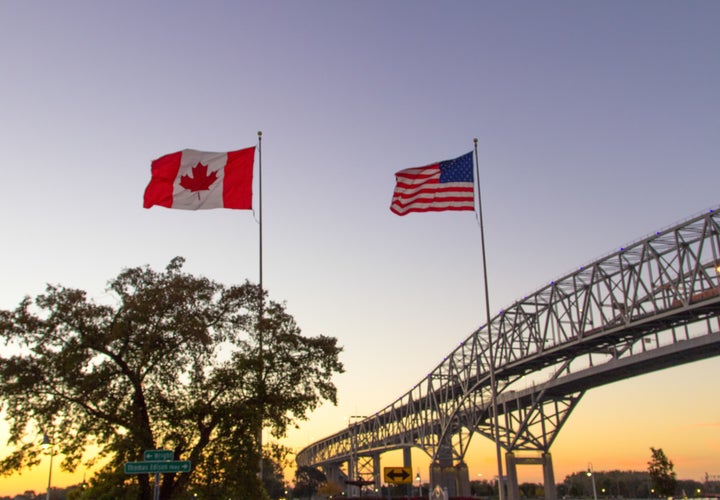The final result of the U.S. presidential election likely won’t be known for a few days or even weeks, but a familiar call is already ringing out — the “move to Canada” people.
After many divisive major U.S. political events, from elections to debates, Americans have taken to social media crying out their desire to move to Canada. It happened in 2012. It happened in 2016 when Canada’s immigration site actually crashed following Trump’s first election. It happened after the garbage fire of the first 2020 presidential debate. And now, like clockwork, it’s happening as results of the 2020 election continue to roll in.
While Canada is an appealing destination (who doesn’t love poutine, ketchup chips and Carly Rae Jepsen?), moving here is not as simple as simply deciding to. There are forms, processes, and a lot of complications from the COVID-19 pandemic.
Here’s what you need to know.
How do I move to Canada from the United States?
U.S. citizens looking to move to Canada have a few avenues you can take to get permanent residency.
If you are a skilled worker, you can apply for Express Entry. Once you set up a profile, you’ll be scored using a points-based system that looks at things like your worke-related skills and experience. Immigration Canada will send invitations to those with the highest points, inviting you to apply for permanent residency.
You can also move here if you have family willing to sponsor you. A Canadian citizen or permanent resident can sponsor you if they are over 18.

Permanent residency is also possible through the provincial nominee program, which means you’re sponsored by a specific province looking for specific skilled workers, students or entrepreneurial investors.
There are several other paths to permanent residency including as a caregiver, a self-employed worker, someone looking to build a start-up, or through various pilot programs in the agri-food sector as well as regions like the Atlantic and the North.
You can find out everything you need to know to apply for Canadian permanent residency on the Immigration Canada website.
You also can come to Canada as a refugee, but in that case you can’t just apply, you must be referred by an organization such as the United Nations Refugee Agency.
What about citizenship?
So you want to go full maple syrup? There’s a process for that, too.
You must be a permanent resident, have lived in Canada for three out of the last five years, filed taxes, passed the citizenship test, proved your language skills and paid an application fee of $630 for adults or $100 for kids.
Keep in mind that with the COVID-19 pandemic, processing citizenship applications can take a year or more.
Ok, what if I want to just visit?
Keen to get away from the U.S. temporarily? That’s complicated too.
Normally, U.S. citizens can visit freely as tourists without needing to apply for a visa. But during the COVID-19 pandemic, the border is currently closed to non-essential travel between the two countries.
If you want to work or study in Canada, you need to apply for the requisite permits. If you graduate from university in Canada and aren’t a citizen or permanent resident, you’ll need to apply for a post-study work permit. If you want to work in Canada, you’ll need either an employer-specific work permit, or an open one.
Even then, anyone entering Canada is required to quarantine for a 14-day isolation period upon arrival. In most cases, you are responsible for setting up your quarantine arrangements.
So that’s all to say, the road to Canada is a bumpy snow-covered one. But it’s certainly not impossible.